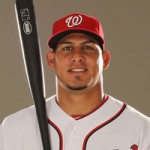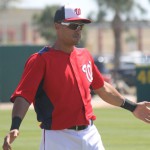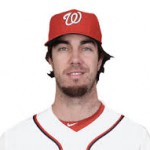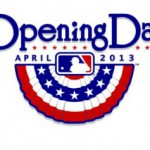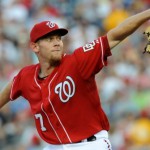Despite not really being a big NCAA basketball fan, I’m as intrigued as the next guy about the tournament, 12-vs-5 seed match-ups, and other statistical oddities. This year, with the alma-mater James Madison University making the tournament for the first time since 1994, I took a slightly increased interest in the tournament. And each year it seems we add to the lists of amazing accomplishments when it comes to upsets (2013’s list is high lighted below in red), mid-majors making the final four, or top teams getting eliminated early.
Here’s some useless trivia on the tournament, collected over the years, updated for 2013’s tournamnet.
NCAA tourney Trivia
Seeding began in 1979, field expands to 64 in 1985 (I’m conveniently ignoring the “expansion” to 68)
Lowest seeds to make final four (since seeding began in 1979)
– #11: LSU 1986, #11 George Mason 2006, #11 VCU 2011
– #9: Penn 1979, Wichita State 2013
– #8: UCLA 1980, Villanova 1985, Wisconsin 2000, UNC 2000, Butler 2011
– #7: Virginia 1984
– #6: Michigan 1992, Kansas 1988, Providence 1987,Nc State 1983, Houston 1982, Purdue 1980
– #5: Florida 2000, Iowa 1980, Indiana 2002
Interesting that no #12 seed, despite 12/5 upsets every year, has made the final four. Clearly its easier to make it out of a bracket from the #11 seed spot, who has to beat #6, #3, #2 and #1 seeds of a region in order, hence getting the #1 seed last.
Lowest seeds to win it/Non #1 or #2 seeds to win it
– #8: Villanova 1985
– #6: Nc State 1983
– #6: Kansas 1988
– #4: Arizona 1997
– #3: Michigan 1989
– #3: Syracuse 2003
– #3: Florida 2006
– #3: UConn 2011
Villanova and Nc State’s runs are among the two best tournament stories in history of course.
#1 Seeds that have lost in 2nd Round: Happened 15 times since expansion to 64 teams in 85
– 1985: #8 Villanova d #1 Michigan (Villanova wins tourney)
– 1986: #8 Auburn d #1 St. Johns (Auburn loses regional final)
– 1990: #8 UNC d #1 Oklahoma (UNC loses next round)
– 1992: #9 UTEP d #1 Kansas (UTEP loses next round)
– 1994: #9 BC d #1 UNC (BC loses next round)
– 1996: #8 Georgia d #1 Purdue (loses next round)
– 1998: #8 Rhode Island d #1 Kansas (loses regional final)
– 2000: #8 UNC d #1 Stanford (loses final four)
– 2000: #8 Wisconsin d #1 Arizona (loses in final four)
– 2002: #8 UCLA d #1 Cincinnati (loses next round)
– 2004: #9 UAB d #1 Kentucky (loses next round)
– 2004: #8 Alabama d #1 Stanford (loses reg. final)
– 2010: #9 Northern Iowa d #1 Kansas (lost next round)
– 2011: #8 Butler d #1 Pittsburgh (lost in national final)
– 2013: #9 Wichita State d #1 Gonzaga (lost in the final four)
I have a theory about college basketball in general, and it is sort of highlighted by the Butler and Wichita State results here. And to a lesser extent VCU’s run a few years ago. The theory is this; with fewer top guys staying all four years, the mid-major teams who recruit a nucleaus of guys who play together for four years end up being nearly as good a team as a team of high-end recruits who are freshman or sophomores. Hence why we’re clearly seeing more mid-major teams working their way through to the later stages of the game. Anyone who calls VCU a cinderella didn’t watch their games; they pounded teams, good teams, ranked teams on their way to the final four. They were no fluke. I talked about this in a March 2011 post with more details. Wichita State this year was a very, very good team. Butler nearly won the national title two years ago.
Why don’t these teams get more national press? Because national writers just assume that because a team plays in the ACC or Big East, they’re better. So we’ll continue to see these “upsets” until eventually we get more national parity in terms of press coverage.
Closest call 1-16 games
– 1985: Michigan d Farleigh Dickenson 59-55
– 1989: Georgetown d Princeton 50-49
– 1989: Oklahoma d East Tennessee State 72-71
– 1990: Michigan State d Murray State 75-71 OT
– 1996: Purdue d Western Carolina 73-71
– 2006: Connecticut d Albany 72-59 (Uconn down by 12 in 2nd half)
– 2013: Gonzaga d Southern 64-58 (tied later in the game)
I didn’t really think the Gonzaga/Southern game was *that* close … but everyone talked about how they “got a scare.” This was no one-point win or OT win, like we saw before. I remember watching the Georgetown-Princeton game; Princeton had a shot at the end to win it and the shooter was *clearly* fouled … but no call and Georgetown escaped.
Side note: why does Georgetown constantly have issues with these long-shot seeds?
#15 seeds that have won games (7): only FGCU has advanced.
– 1991 Richmond over Syracuse
– 1993 Santa Clara over Arizona
– 1997 Coppin State over South Carolina (then lost to Texas by 1 2nd rnd)
– 2001: Hampton over Iowa State
– 2012: Norfolk State over Missouri
– 2012: Lehigh over Duke
– 2013: Florida Gulf Coast over Georgetown (then won easily in 2nd round over SDSU, lost by 10 in sweet 16)
FGCU was no fluke; they cruised to wins over both Georgetown and San Diego State, and jumped way ahead of Florida in the sweet 16 before sound coaching from Billy Donovan took over and Florida was able to grind them down. If FGCU had just one half-way decent rebounder I think they would have beaten Florida.
#13,14 seeds that have made it to the sweet 16 (6) (none made it beyond)
– #14 Cleveland State 1986 (then lost 71-70 to #7 Navy)
– #13 Richmond 1988 (blown out by #1 temple)
– #14 Tennessee-Chattanooga 1997 (Loses 71-65 Providence)
– #13 Valparaiso 1998 (Loses to #8 Rhode Island)
– #13 Oklahoma 1999
– #13 Ohio 2011
Mid-Majors to make Elite 8 since 1985 (expansion to 64). 11 times now.
– 1981: #6 Wichita State (MVC)
– 1986: #7 Navy (CAA); David Robertson
– 1990: #11 Loyola Marymount (WCC): Hank Gathers & Bo Kimble
– 1999: #10 Gonzaga (WCC)
– 2002: #10 Kent State (MAC)
– 2006: #11 George Mason (CAA)
– 2008: #10 Davidson (Southern): had Stephan Curry
– 2010: #5 Butler (Horizon)
– 2011: #8 Butler (Horizon)
– 2011: #11 VCU (CAA)
– 2013: #9 Wichita State (MVC)
“High-Mid” majors to elite 8 since 79 (Louisville in Metro/C-USA a number of times here)
– 1980,2,3,6: Louisville
– 1981: #6 BYU (MWC)
– 1984: #10 Dayton (A10)
– 1987-1991: #1, #4 UNLV (MWC)
– 1996: #1 UMass (A10)
– 1997: #3 Utah (MWC), Louisville (Cusa)
– 2001: #11 Temple (A10)
– 2004: #1 St. Josephs, #7 Xavier (A10)
– 2005: Louisville (cusa)
– 2007: #2 Memphis (C-usa)
– 2008: #1 Memphis (c-usa), #3 Xavier (A10)
Unlike other pundits, who divide the basketball conferences into “big 6” and “mid-major,” I think there’s a third tier. The big 6 conferences are obvious (Big East, ACC, SEC, Big10, Big12 and Pac10). But basketball conferences like the old Metro Conference, Conference-USA, the Atlantic-10 and to a slightly lesser extent the Mountain West Conference have in many cases been just as strong as the big-6 conferences. They’ve had #1 ranked teams, plenty of #1 overall teams (just see the list above), and i think a distinction between “mid-majors” and these “high” mid-majors should be made.
Mid/High mid-Majors to make final four: (Not counting Louisville pre-Big East here)
– 1979: #1 Indiana State (MVC), #9 Pennsylvania (Ivy)
– 1987, 1990, 1991: #1 UNLV (MWC)
– 1997: #3 Utah (MWC)
– 2006: #11 George Mason (CAA)
– 2010: #5 Butler (Horizon)
– 2011: #8 Butler (Horizon), #11 VCU (CAA)
– 2013: #9 Wichita State (MVC)
Years no #1 seeds didn’t make final 4
– 1980: #5 Iowa, #2 Louisville, #6 Purdue, #8 Ucla
– 2006: #4 LSU, #2 Ucla, #11 George Mason, #3 Florida
– 2011: #8 Butler, #11 VCU, #3 Uconn, #4 Kentucky
Teams to beat three #1 seeds in a tourney
– 1997; #4 Arizona
—
Conferences that have never won an NCAA game: Patriot
—
Only team from a “power” conference never to make the NCAA tournament?: Northwestern
Biggest margin of victory in Final game
– 1990: UNLV over Duke 103-73
– 1992: Duke d Mich State 71-51
Highest combined seed count of any final four?
– 2000: 22 (Mich St 1, Florida 5, UNC 8, Wisc 8)
– 2011: 26 (Butler 8, VCU 11, Uconn 3, Kentucky 4)
Lowest:
– 1999, 1997: 7: 3 ones and a 4
– 1993: 5 (3 ones and a two)
– 2008: 4: all four #1 seeds made the final4
Teams to win NCAA title, finishing undefeated
– None since 1979 (when seeding started in the tourney)
– 1954: Kentucky (but barred form post-season for ineligible players)
– 1956: San Francisco
– 1957: UNC
– 1964: UCLA
– 1967: UCLA
– 1972: UCLA
– 1973: UCLA
– 1973: NC State (barred from post-season recruiting violations)
– 1976: Indiana (just voted best ever NCAA team)
Teams to enter Tourney Undefeated, but lose
– 1979: Indiana State: Lost in final to Michigan (Larry Bird’s team)
– 1991: UNLV: lost to Duke in National semis
Lowest Seeding ever given to a power6 conference team?
– 2008: Georga was a #13 seed
– 1999: #13 Oklahoma 1999
– 2013: Oregon, Cal and Ole Miss all given #12 seeds from power conferences.
